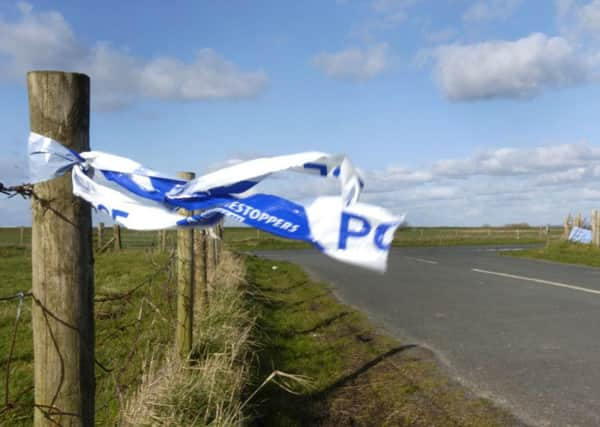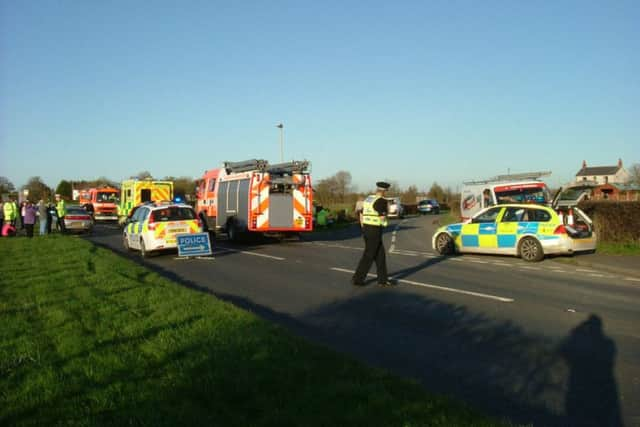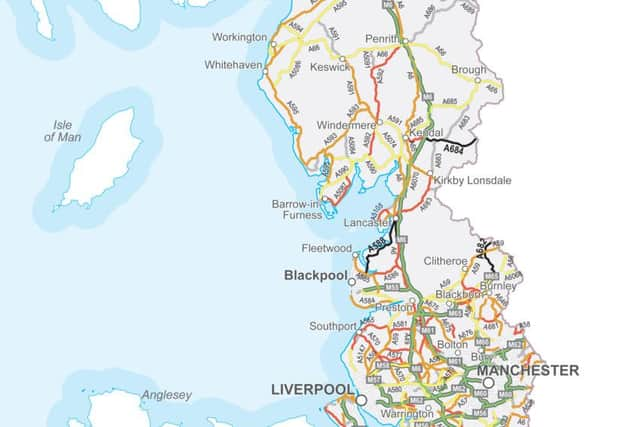The shocking cost of crashes on Lancashire’s roads


A shock report has revealed fatal and serious road crashes cost £544m in the three years to 2013. Only Hampshire and Kent shouldered a bigger bill.
The county is also home to one of the most dangerous roads in Britain - an 18 mile section of the A588 between Blackpool and Lancaster.
Advertisement
Hide AdAdvertisement
Hide AdThe report by the Road Safety Foundation also revealed travellers were at the highest risk of death or serious injury on the north west’s A roads. Its motorways are the third worst and major single carriageways the second worst in mainland Britain.


Now the Foundation, which prepared the report on the cost and location of road crashes across the country, is offering to help Lancashire County Council review where it should target its spending on highway safety. It says even modest spending and small changes can save lives and save costs.
Report author Caroline Moore acknowledged that Lancashire has a high proportion of highest risk roads and stressed: “Highway budgets could be used to introduce measures to reduce risks.”
She said road signs needed to be self explanatory - guiding motorists about hazards ahead. “Provide adequate signing and clear lining,” she said. “Do as much as possible to reduce the risk.
Advertisement
Hide AdAdvertisement
Hide Ad“They just need to review the roads. We’ve got the tools to measure the safety on their roads and help to prioritise where improvements can be made.”


But County Coun John Fillis, cabinet member for highways and transport, insists road safety is already a priority for the council and lots of work is ongoing to make the roads safer.
The report found there were 45 fatal crashes and 569 serious crashes in Lancashire between 2011 and 13. The report claims the the crashes cost the county £544m over that period, calculated on a number of factors including the response from the emergency services, insurance claims and loss of output due to injury.
The most dangerous road is the Blackpool to Lancaster A588, which runs through Conder Green, Cockerham and Pilling and was the scene of 26 fatalities and serious crashes between 2011-2013.
Advertisement
Hide AdAdvertisement
Hide AdParish councillor June Jackson, who called for speed limits to be reduced to 40mph after motorcyclist David Redman was killed four yeas ago, said: “It’s a dangerous road and it’s not going to get better. It would be sensible to reduce the speed limit to 40mph but then you have to enforce that limit.
“Average speed cameras would be effective as they have worked elsewhere.”
The report also found a nine kilometre length of the A6 at the M6’s Lancaster junction 33 was also named as a “persistently higher risk road” between 2008 and 2013, with 53 fatalities and serious crashes.
But there was news of improvements too. The region can claim to be home to Highway England’s most improved road. The 11km section of the M6 between junctions 33 (Galgate) and 34 (Lancaster) was marked out for this accolade after the number of fatal and serious crashes dropped from 13 in 2008-11 to three in the period 2011-13,
Advertisement
Hide AdAdvertisement
Hide AdMajor resurfacing work and the replacement of the metal central barrier with a concrete one were amongst improvements.
County Coun John Fillis insists tackling road safety is a major priority for the authority.
He said: “Improving road safety is a real priority and every year we carry out analysis to identify locations with the highest casualty rates to ensure we target road safety measures where they will have the greatest impact.
“We’ve carried out a number of schemes, investing £211,000 over the last 10 years, to improve safety along the whole length of the A588, which has included improvements to signs, road markings, junctions, changes to speed limits and traffic calming.
Advertisement
Hide AdAdvertisement
Hide Ad“These improvements focus on preventing the most common types of accident, which are loss of control with excessive speed being a factor, and accidents around junctions. The police also carry out regular mobile speed enforcement.”
He continued: “The section of the A6 identified by the report is a busy commuter route used by many cyclists as well as motorists, and we’ve carried out a number of improvements focused where most accidents happen. This includes a scheme carried out in 2012 to make the A6/A588 Pointer roundabout safer for cyclists.”
The foundation’s report, sponsored by Ageas UK, also highlighted a huge disparity in the cost of crashes in non-metropolitan areas to local authorities. The four financially worst hit counties are the most populated, with Hampshire facing costs of £631m and Kent £554m in the same period. Essex, with a larger population than Lancashire came fourth in the list with £530m costs. The figure comprises police, ambulance and associated costs, plus the loss of the contribution to the economy which accident victims would have made.
The RSF concluded that reducing crashes on the Strategic Road Network (SRN) was “a moral and an economic imperative” for Highways England (HE) which has responsibility for motorways and major ‘A’ roads.